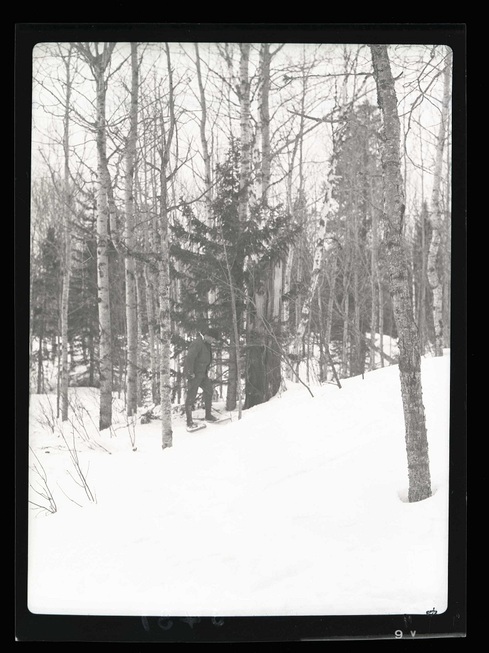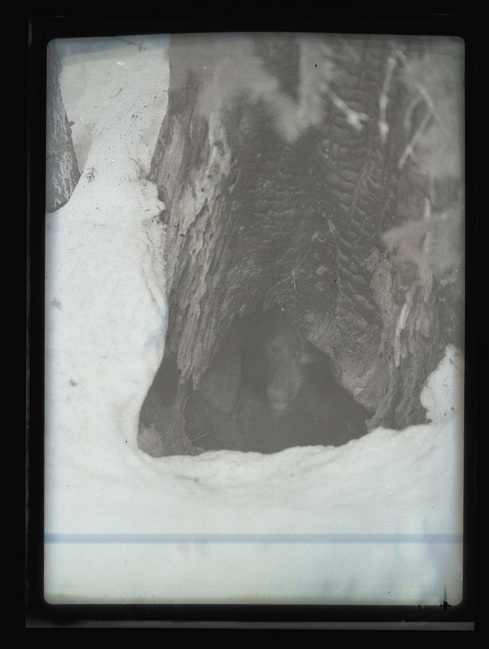An excerpt from My Life in Natural History, by Walter J. Breckenridge, former preparator (1926-1946) and director (1946-1970) of the Bell Museum of Natural History, illustrated by images from the Bell Museum records at the University Archives:
“Back in the CCC [Civilian Conservation Corps] days in the 1930s, I received an invitation from the Department of Natural Resources to investigate some hibernating bears still in their dens up in northeast Minnesota that the CCC boys had stumbled upon during their routine work in the woods. I, of course, jumped at the chance to see for myself just how the black bears holed up their hibernation. Did they actually dig holes in the ground and did they really sleep long and soundly through their winter sleep? During March there was still a considerable depth of snow on the ground in that area so I packed my snowshoes and parka along with my still and movie cameras. At least a part of the smaller back roads in the camp area had been kept plowed to within reasonably easy hiking distance of the dens…
Den number one would hardly have been recognized as a bear den when our guide pointed out a small hole in the snow about 3 or 4 inches across in fairly level ground. But there was evidence of occupation in that long ice crystals lined the hole. These had been formed from the breath of the occupant. However, with only a poke of a pole near the crystal-lined hole, a small area of snow caved in to reveal a much larger hole a foot or more in diameter. We found that we had no reason to disturb her so we continued on to den number two.”

– Black Bear den afoot of tree, distant, March 6, 1937, Grand Marais
“On approaching this den we could see that this was at the base of a fairly large tree. A slight poke at the breathing hole exposed quite a large opening about 18 inches across. As we peered into the cavity, a slight rustling sound indicated that the occupant was not sleeping. Hoping she would not make any belligerent moves, we crouched down and looked in more closely, but visibility was far from good. However, we could discern the light skin around the bear’s nose at first. Then “What are those two other light spots that appeared beside her?” As we might have suspected at this early spring date, they were from the twin cubs that we guessed were about the size of small kittens. They could be as much as five or six weeks old since they were probably born in late January or February while the mother was hibernating. Photography was out of the questions since a black animal in a black hole isn’t a very good subject without flashlights being available. But a long exposure with my still camera did reveal three white spots around the noses of the mother and the two cubs. After my eyes became adjusted to the dim light, I could make out the motion of the mother’s arm as she reached around and pulled the cubs back out of sight. Not wanting to cause any further disturbance of the family, we retreated from the second den and its occupants…”

– Black Bear den afoot of tree, near, March 6, 1937, Grand Marais
“Thus my observations at these… dens appeared to answer my two questions. Yes, they will dig holes for hibernation, although they will take advantage of natural protection whenever they can find it. And no, black bears do not always sleep soundly while hibernating, although some do and some do not.”